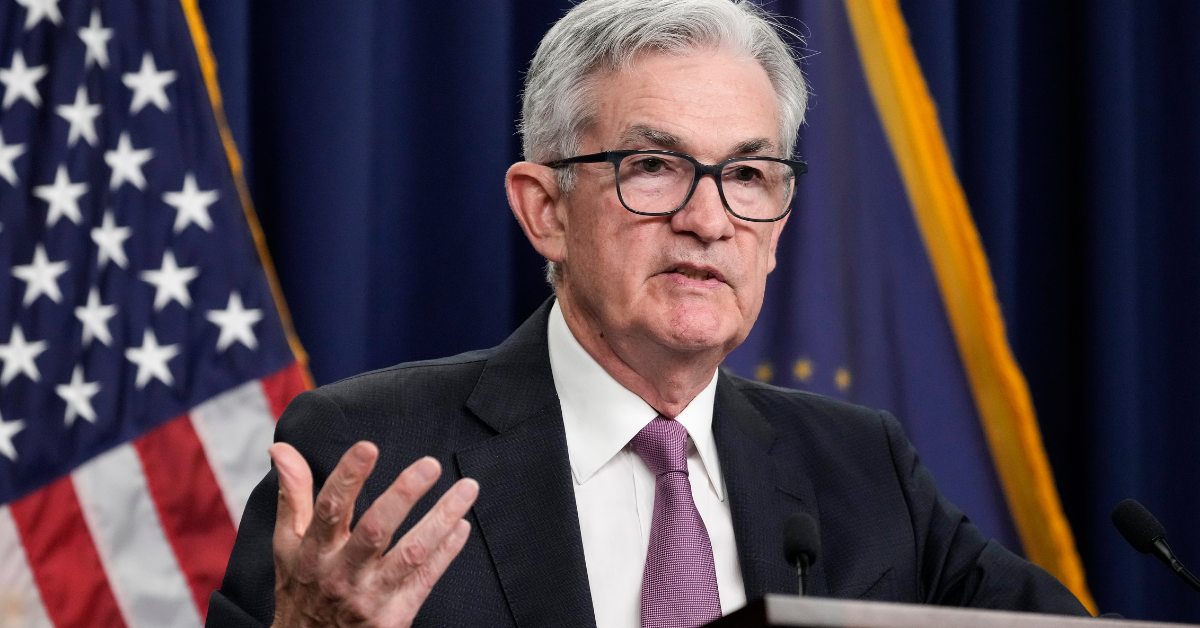In this issue
- Crypto prices: Deep freeze
- Ava Labs: Blame and denial
- Chinese blockchain: Powering up
From the Editor’s Desk
Dear Reader,
We may be more than three months from the official beginning of winter, but another cold blast has hit cryptocurrency markets in recent days.
Indirectly, the chill has been coming from a country where, in the movies, at least, it’s always winter: Russia, and the inflation and myriad economic woes that Moscow’s war on Ukraine have done much to create.
But more directly, the cold arrived from Jackson Hole, in the U.S. state of Wyoming, where Federal Reserve Chairman Jerome Powell gave a speech making clear that — short-term gains be damned — the Fed’s muscular approach to tackling inflation is here to stay until the beast is tamed.
Not so long ago, the prospect of rising prices and consequently rattled equity markets might have prompted crypto investors to double down on their bets, and encouraged more of the crypto-curious looking to get in on the action. Now, not so much, as cryptocurrencies that have become household names have seen their values fall alongside those of traditional assets.
Yet amid the market misery, the work of building the future of finance continues. Just days ago, Forkast’s latest Crypto Rising event refused by its very name to succumb to the gloom, drawing some of the industry’s best and brightest in a forward-looking assessment of the biggest challenges and opportunities awaiting the sector as it continues to develop.
Issues such as regulatory cooperation, exchange licensing and consumer protection all sparked energetic discussion that defied the downbeat state of the crypto market. These are hardly topics that would set the agenda for any event in an industry that didn’t have a promising future, and, as such, they represented a strong statement of faith that the good times, like fairer weather, will return.
Facing what appears likely to be a long crypto winter, we should be reminded by such expressions of determination that the present moment, despite the difficulties it has brought, offers a valuable opportunity to take stock, strategize and set in motion the next stage of our industry’s incredible journey.
Until the next time,
Angie Lau,
Founder and Editor-in-Chief
Forkast
1. In a hole

By the numbers: Jackson Hole — over 5,000% increase in Google search volume.
Crypto and equity markets alike took a tumble after Federal Reserve Chairman Jerome Powell made a speech at the Jackson Hole Economic Symposium in which he issued warnings over continued monetary policy tightening and economic turmoil. The price of Bitcoin fell below US$20,000 for the first time since July 14.
- In his speech last Friday, the Fed chair said the central bank was required to use its tools “forcefully” to tame inflation, and that it would not look to lower interest rates until inflation fell back inside a 2% target range.
- The U.S. has been experiencing some of the highest inflation in four decades, with the Fed making two consecutive 75-basis-point interest rate increases in an attempt to stabilize surging prices.
- Feroze Medora, Asia-Pacific managing director of crypto exchange Gemini, said in an emailed statement shared with Forkast that Powell’s comments had “destroyed any hopes of a potential change in course regarding rate hikes.”
- The price of Bitcoin dropped by 9.8% within 72 hours of Powell’s speech, and at one point on Monday it was trading below US$20,000. Ethereum fell even further, from US$1,693 on Friday to a low of US$1,429 on Monday, a dive of more than 15.5%, according to CoinMarketCap data. BTC and ETH recovered somewhat, to US$20,279 and US$1,587 respectively by midweek in Asia.
- After Powell’s speech, the Dow Jones Industrial Average slid 3% in its worst day of trading since May, and as of midweek in Asia, has yet to recover. The S&P 500 Index and the Nasdaq Composite Index, both of which shed more than 3% in the worst trading day since June for both indices, also remain down.
Forkast.Insights | What does it mean?
The days of crypto being a hedge against broader market trends appear to be over. Historically, crypto — and Bitcoin’s appeal to Wall Street — was that its erratic price movements offered opportunities for gains when other asset prices were heading south. But that’s changing.
Bitcoin’s correlation with Invesco QQQ, a popular exchange-traded fund that tracks the tech-heavy Nasdaq 100 Index, has reached a score of 0.894, its highest level in nearly three years.
The slow convergence of the two asset classes represents an inflection point for the industry at large. Traditionally, crypto did a good job of attracting money from big investors on the promise they could make significant returns. But capital inflows into the crypto space have been negative for the past three weeks, and overall activity among institutional investors is at its lowest ebb since October 2020.
As traditional investment vehicles such as bonds offer an improved performance amid high inflation, crypto is heading into an era where big money looks elsewhere for gains.
All of that suggests that the crypto winter is just getting underway and that more pain is to come. Indeed, indicators suggest that Ethereum, despite the much-vaunted Merge that promises to make it a proof-of-stake network, is likely to fall to multi-year lows. Hold on to your hats.
2. Courting trouble

By the numbers: CryptoLeaks — over 5,000% increase in Google search volume.
Emin Gün Sirer, the founder and chief executive of Ava Labs — which runs the Avalanche blockchain and its native cryptocurrency, AVAX — has hit back following a viral CryptoLeaks post alleging that the company had arranged for law firm Roche Freedman to use “gangster-style” tactics to attack competing blockchains such as Solana in order to distract U.S. regulators from “the highly commercial nature of Ava Labs and the Avalanche blockchain.”
- Sirer tweeted: “How could anyone believe something so ridiculous as the conspiracy theory nonsense on CryptoLeaks? We would never engage in the unlawful, unethical and just plain wrong behavior claimed in these self-serving videos and inflammatory article [sic]. Our tech & team speak for themselves.”
- Writing on Medium, he said: “Roche has filed all their lawsuits independently of us. For instance, we learned about the Solana lawsuit only through the press, were livid that [Roche Freeman founding partner Kyle Roche] was suing another project, and attempted to persuade him to drop the case. Ava Labs’ General Counsel went the extra mile to write an article debunking Roche’s lawsuit as meritless.”
- The CryptoLeaks post contains multiple video snippets of Roche, who appears to claim to have pursued legal action against competing blockchain firms in an under-the-table agreement with Ava Labs.
- Roche claims that it was paid in AVAX tokens for the alleged arrangement.
- CryptoLeaks also brings Ripple Labs and its chief executive, Brad Garlinghouse, into the picture, claiming that Roche represented Ripple to defend against a lawsuit brought by the U.S. Securities and Exchange Commission that XRP tokens were illegal securities.
- According to CryptoLeaks, Garlinghouse agreed to invest in Roche’s proposal to establish a firm that sues crypto companies using the tactics allegedly deployed against Ripple.
- Garlinghouse has since denied the allegations on Twitter, saying: “Can’t comment on the validity of the slew of allegations in here, but I can unequivocally say that I have never met or spoken to (much less invested in) Kyle Roche.”
- AVAX fell to a low of US$17.72 on Monday, down nearly 23% since the CryptoLeaks post. It was changing hands at US$19.53 at press time, according to CoinGecko data.
Forkast.Insights | What does it mean?
The rumors surrounding Ava Labs’ alleged deal with a law firm to attack its rivals share striking similarities with some of the tactics employed by Big Tech and the American robber barons of the 19th and early 20th centuries.
Economic historians would find such conduct unsurprising. Capitalist industry has an inbuilt tendency to become more anticompetitive over time, and crypto may be going through its first phase of that.
The bigger question is: If the allegations are borne out, what will the industry do about it? By press time, Solana and DFinity, both claimed to be targets of Roche Freedman’s alleged activities, had said nothing publicly.
The second, broader concern facing the industry relates to the role that local law enforcement can play in keeping a global industry in check. If Ava Labs has been using a law practice to stifle competition, antitrust legislators may have a tough time proving it. Antitrust law in New York, where AVA Labs is based, was drafted to protect consumer purchasing power and jobs. Federal antitrust law — used in such cases as the break-up of Standard Oil — focuses on monopolies that crush competition at an interstate level. Tech companies have frequently exploited that fact to argue that they’re not engaged in monopoly conduct. In the crypto industry, such an argument is even easier to make, and for Ava Labs, whose competitors are spread across the world, may be all but unassailable.
3. Power play

China’s National Energy Administration is considering the use of blockchain platforms for electricity trading between self-contained power generation facilities and state and national grids, according to an agency policy document.
- The southwestern province of Yunnan has awarded a contract for a blockchain-based electricity trading system to Chinese tech services firm Insigma Hengtian Software, according to a company social media post.
- Last year, the Institute of Electrical and Electronics Engineers said in a study that blockchain’s immutability could facilitate transparent electricity metering and proof of transactions.
- Although cryptocurrencies — particularly those whose networks run on energy-intensive proof-of-work consensus mechanisms — have been criticized over their huge power consumption, blockchain technology has found favor among various international organizations with environmental agendas.
- In mid-August, World Bank Group member International Finance Corporation partnered with blockchain company Chia Network and green investment platforms Cultivo and Aspiration to launch the Carbon Opportunities Fund, which will raise private capital to source, tokenize and sell carbon credits.
Forkast.Insights | What does it mean?
China has had an increasingly bifurcated approach toward blockchain. Beijing has been cracking down on cryptocurrency trading for several years and last year announced a nationwide ban on crypto mining. But China has also been investing heavily in blockchain technology, and its energy agency’s openness to blockchain-based electricity trading is consistent with Beijing’s embrace of the technology’s non-crypto uses.
In fact, in March last year, the word “blockchain” was featured for the first time in the country’s 14th five-year Plan, a blueprint for its economic development covering the period 2021 to 2025.
The idea to use blockchain technology for China’s electricity trading comes as the nation’s power trading market has become too big to ignore. Last year, the country’s power-exchange centers collectively handled an electricity trading volume of 3,778.74 billion kWh, accounting for 45.5% of all electricity consumption and representing a 19.3% increase from the previous year, according to a report by law firm Dentons Shanghai that cited statistics from China Electricity Council.
To accommodate the growing market, China has built regional electricity centers in Beijing and Guangzhou, the capital of the southeastern province of Guangdong, and in dozens of other provincial centers.
Those trading centers are also exploring ways to make it easier for market participants to exchange electricity. Kunming Power Exchange Center, for example, launched an e-commerce platform in 2020 on which companies can trade electricity and even customize deals.
Differences between trading rules and data entry protocols among the exchange centers remain major challenges for inter-provincial and inter-regional power trading, which has caused some surplus power to go to waste, according to the Dentons report.
By using blockchain technology, authorities are hoping to address those problems and create a nationwide system to make power trading easier for local grids, national grids and enterprises alike.




